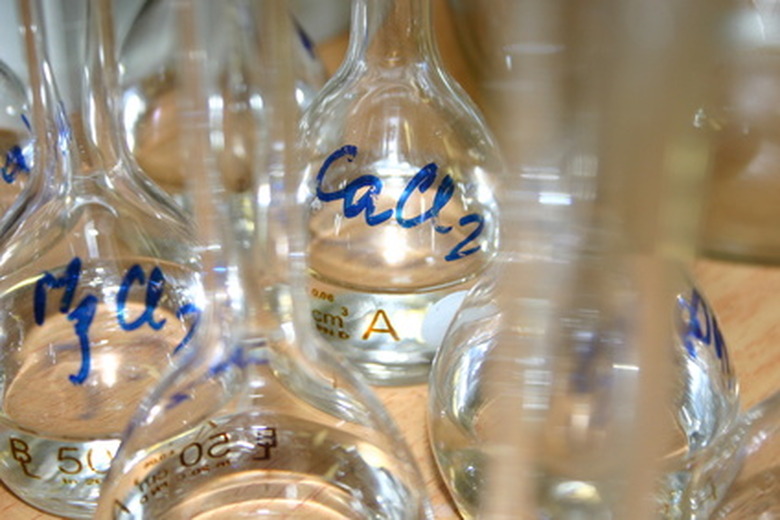Laboratory Glassware And Functions
Laboratory glassware is necessary for virtually every type of chemical and biological analysis. Borosilicate glass, which is made of silica and boron oxide, is the most common material for laboratory glassware, due to its resistance to high temperatures and corrosive materials. Although there are countless varieties of laboratory glassware, some of which have highly specific applications, a few basic types appear in almost every laboratory.
Burets
Burets
A buret is a glass tube with a tap or stopcock on the bottom end, which delivers solution samples in precisely measured volumes, according to ChemLab at Dartmouth College. Burets are useful for titration, which is a technique that determines the concentration of a chemical substance in a given solution.
According to Mountain Empire Community College, using a buret is not difficult, but it does takes practice to achieve accurate measurements.
Beakers and Erlenmeyer Flasks
Beakers and Erlenmeyer Flasks
Beakers are cylindrical containers of varied sizes, with a small pouring lip to avoids spills. They're ideal for mixing and transporting solutions. However, although they usually have volume graduations on the side, these markings are not reliable for applications that require strict accuracy. According to ChemLab at Dartmouth College, the error margin of these graduations can be as high as 5 percent.
Erlenmeyer flasks are similar in function to beakers, but they are conical in shape, with a cylindrical neck and a wide, flat base that is ideal for heating and analyzing solutions.
Pipets
Pipets
A pipet is a long tube used to measure out small amounts of solution, according to ChemLab at Dartmouth College. According to "Basic Medical Laboratory Techniques" by Barbara Estridge, there are various types of pipets, including the graduated pipet, which is used in the titration method in a similar way to the buret; and the bulb-form pipet, which features a sucking bulb that draws solutions upward into the pipet. Bulb-form pipets tend to be larger than graduated pipets, and can hold volumes of up to 100 milliliters.
Cite This Article
MLA
Zinni, Yasmin. "Laboratory Glassware And Functions" sciencing.com, https://www.sciencing.com/laboratory-glassware-functions-7160102/. 24 April 2017.
APA
Zinni, Yasmin. (2017, April 24). Laboratory Glassware And Functions. sciencing.com. Retrieved from https://www.sciencing.com/laboratory-glassware-functions-7160102/
Chicago
Zinni, Yasmin. Laboratory Glassware And Functions last modified March 24, 2022. https://www.sciencing.com/laboratory-glassware-functions-7160102/
